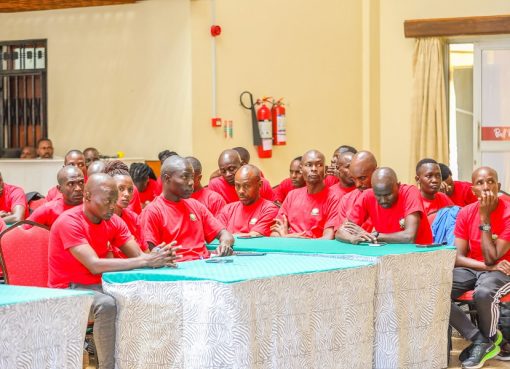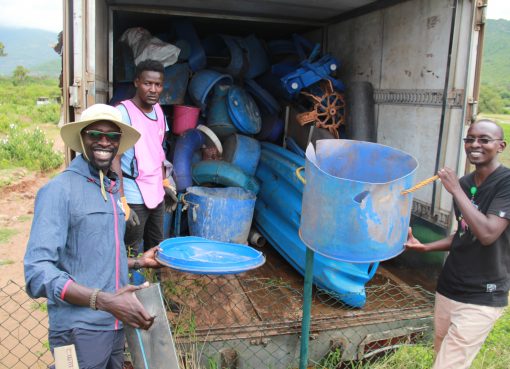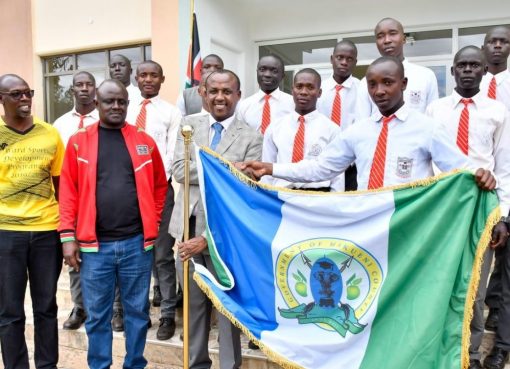The government has assured Kenyans that it is in control of the ongoing drought situation and it is adequately prepared to mitigate its effects.
The Government Spokesperson, Col. (Rtd) Cyrus Oguna said that the government has set aside Sh.5.4 billion for a comprehensive drought response plan covering up to December, 2019.
Speaking on Thursday at the Government Media Center, Oguna said that the Early Warning and Response System report established that 2.6 million persons are threatened by food insecurity, while 623,000 children face the risk of malnutrition.
“Livestock, the main source of livelihood for many Kenyan communities have also become victims to the impact of the drought,” highlighted Oguna.
Oguna assured that there are sufficient food stocks in the Strategic Grain Reserve and the government will ensure that food reaches all areas facing the risk of starvation.
According to Oguna, areas most affected are in the Arid and Semi-Arid Lands (ASALs) counties with 15 of them being severely affected.
“These counties are Garissa, Mandera, Wajir, Marsabit, Tharaka Nithi, Isiolo, Kitui, Makueni, Tana River, Laikipia, Embu, Kilifi, Nyeri, Lamu and Baringo,” he said.
While highlighting the various government interventions, Oguna said that in the month of July a total of Sh.317 million was utilized in the purchase and distribution of food to the affected areas.
“In the month of August, Sh.700 million was released for the purchase and distribution of food to the affected households across the affected counties,” explained Oguna.
Oguna expounded that a total of 60,560 bags of 50 kg maize was bought at a cost of Sh.77.5 million, 44,450 bags of 50 kg Beans at Sh.160 million, 15, 000 cartons of (24 x ½ ltr) Vegetable oil at Sh.37.5 million, 39,100 50 kg bags of Rice at Sh.215 million, 8,300 25 kg bales of Nutrition health food at Sh.50 million and Non-food items at Sh.15 million while the distribution Logistics cost Sh.145 million.
“The National Government, in collaboration with the County governments in the affected areas, are collectively distributing water by trucks. Other mitigating measures include repairing broken boreholes and replenishing water pans. Agencies involved in the distribution of water are the County Governments, National Drought Management Authority, Northern Water Services Board, and non-governmental organizations,” said Oguna.
He added that an Insurance Scheme has been set up to protect livestock farmers from the ravages of drought.
“The Government has so far managed to pay 15,000 households Sh.299 million to insulate the animals from the severe effects of the current drought. The money paid is to be used to buy animal feed, fetch water for the animals and to undertake any other activity that will ensure the animals are not lost to drought,” explained Oguna.
He added that the Government has been working closely with some development partners and non-state actors in the mitigation and alleviation of the effects of drought and attendant famine in the affected areas.
“The People’s Republic of China has donated 30,000 50kgs bags of rice worth Sh.180 million. Additionally, World Food Programme (WFP) is collaborating with the Ministry of Devolution and the Arid and Semi-Arid Lands (ASALs) in the coordination of food distribution and formulation of policies on food security in the country,” he said.
He added that in order to enhance efficiency in food support to the affected, the Government is considering the introduction of Cash Transfer Initiative instead of physical food. This consideration is informed by experiences from social protection and drought mitigation programs.
“The experience from these programmes such as Inua Jamii and Chakula Kwa Jamii Cash Transfer Program of 2017 revealed some advantages which include being cheaper in the long run, allows the beneficiaries to retain dignity and respect, accords the beneficiary opportunity to make choices for better nutrition and it also has minimum wastage,” said Oguna.
He said that this is an idea under consideration and a multi-agency committee has been formed and tasked to determine the most ideal method of social protection programs.
By Joseph Ng’ang’a




